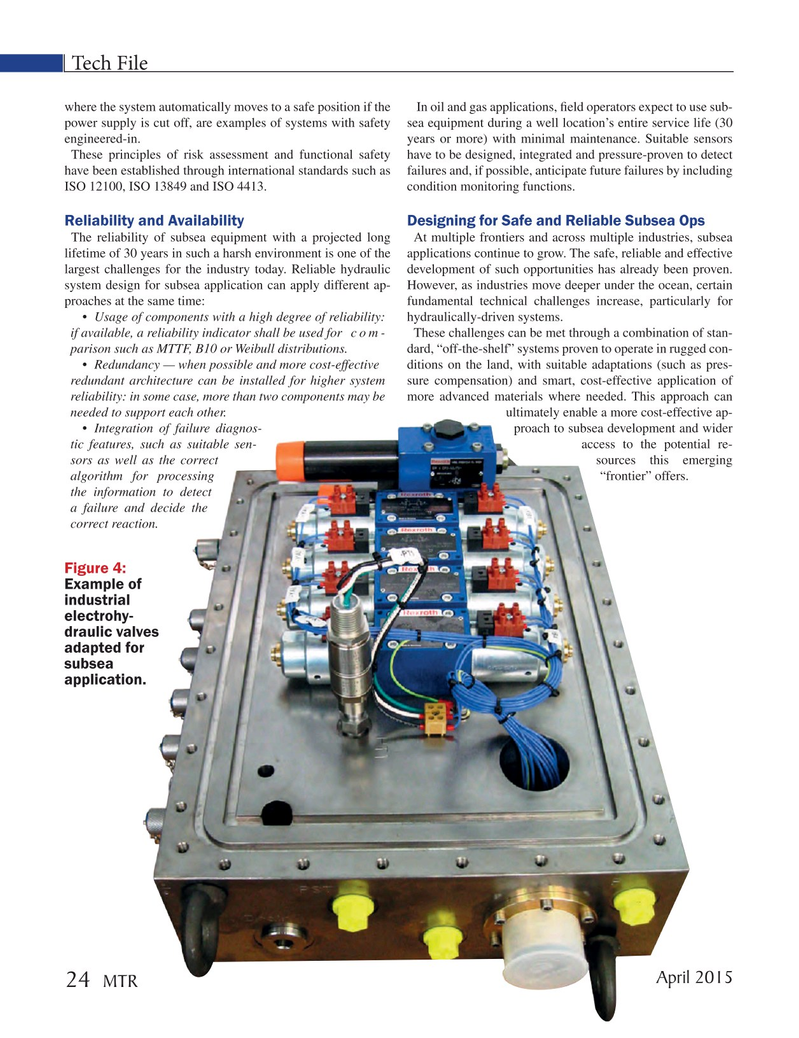
Page 24: of Marine Technology Magazine (April 2015)
Offshore Energy Annual
Read this page in Pdf, Flash or Html5 edition of April 2015 Marine Technology Magazine
Tech File where the system automatically moves to a safe position if the In oil and gas applications, ? eld operators expect to use sub- power supply is cut off, are examples of systems with safety sea equipment during a well location’s entire service life (30 engineered-in. years or more) with minimal maintenance. Suitable sensors
These principles of risk assessment and functional safety have to be designed, integrated and pressure-proven to detect have been established through international standards such as failures and, if possible, anticipate future failures by including
ISO 12100, ISO 13849 and ISO 4413. condition monitoring functions.
Reliability and Availability Designing for Safe and Reliable Subsea Ops
The reliability of subsea equipment with a projected long At multiple frontiers and across multiple industries, subsea lifetime of 30 years in such a harsh environment is one of the applications continue to grow. The safe, reliable and effective largest challenges for the industry today. Reliable hydraulic development of such opportunities has already been proven. system design for subsea application can apply different ap- However, as industries move deeper under the ocean, certain proaches at the same time: fundamental technical challenges increase, particularly for • Usage of components with a high degree of reliability: hydraulically-driven systems.
if available, a reliability indicator shall be used for com- These challenges can be met through a combination of stan- parison such as MTTF, B10 or Weibull distributions. dard, “off-the-shelf” systems proven to operate in rugged con- • Redundancy — when possible and more cost-effective ditions on the land, with suitable adaptations (such as pres- redundant architecture can be installed for higher system sure compensation) and smart, cost-effective application of reliability: in some case, more than two components may be more advanced materials where needed. This approach can needed to support each other. ultimately enable a more cost-effective ap- • Integration of failure diagnos- proach to subsea development and wider tic features, such as suitable sen- access to the potential re- sors as well as the correct sources this emerging algorithm for processing “frontier” offers.
the information to detect a failure and decide the correct reaction.
Figure 4:
Example of industrial electrohy- draulic valves adapted for subsea application.
April 2015 24 MTR
MTR #3 (18-33).indd 24 MTR #3 (18-33).indd 24 4/6/2015 10:35:57 AM4/6/2015 10:35:57 AM

 23
23

 25
25
